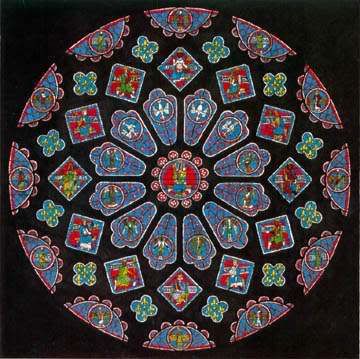I have just switched to Math Mammoth, after having been sold on Math U See and using that for three years, then dabbling in Miquon. I am now a big fan of Math Mammoth and wanted to share more about it. The first part of this was from a comment I submitted to the Math Mammoth website.
After watching the demo DVD, I had been completely sold on Math U See. Both of my children did very well with their Primer (kindergarten) level, and I still really like much of that presentation, such as how they teach place value along with teaching counting, and very clearly identify that you never count higher than nine in each "type" of number (units, tens, hundreds, etc). I also liked how they presented addition and subtraction in such a clear way. The problem I discovered (and I've only used through Beta) is that while they present things in a very clear understandable way, they only seem to present things in one way, using the blocks, then drill it. My children were bored and frustrated with the curriculum starting with Alpha, because it was nearly all drilling of the addition facts. Now, some drill is necessary, but my children were totally bored, and the couple of easy and obvious word problems in each lesson didn't alleviate the unrelenting sameness of each day. Moreover, they didn't want to use the blocks on a regular basis and seemed to find them distracting rather than helpful. The curriculum seemed to help to help kids understand, but it didn't seem to encourage creative mathematical thinking. We switched to Miquon and a more investigational and discovery oriented approach. Our problem was that this was not structured enough for us, moreover the student sheets don't really have directions and so I had to look up and explain each page in the book. We again ran into the problem that the boys didn't want to use the manipulatives all the time, and also found they prefer to have more guidance than Miquon was designed to give. They don't like things to be so open ended.
I really think that Math Mammoth is a nice, balanced curriculum. I love that the instructions and teaching are contained within the student workbook, so that I don't have to do anything to prepare other than read over the instructions with the child and explain them as necessary. It tends to use clear visual examples, when we need hands on examples I pull out the base 10 blocks or cuisenaire rods (which are far less expensive than the MUS blocks). While it contains plenty of practice for each concept, each lesson isn't filled with the exact same kind of problem, and the same concept is approached in several different ways, instead of only one way, like Math U See seemed to do. Each book also contains website and game suggestions, if your child needs extra help or just more fun.
Math Mammoth is also flexible. You can purchase grade level complete curricula for first grade through sixth, the Light Blue series, or you can purchase workbooks arranged around individual topics, the Blue series. There are also collections of worksheets available that aren't designed to teach concepts, but simply practice these. All of these are available as affordable eBooks that can be downloaded and printed as many times as you like, or you can purchase printed copies from Lulu.com. There is a large sample package available for download for free if you'd like to get a look at the curriculum.
So what are the negatives? First, it is only available in color as an ebook. The printed versions available from Lulu.com are in black and white. While I've heard that this is typically fine, I do feel that the color adds to the instruction. Moreover, in purchasing a bound rather than an electronic copy, you lose the benefit of being able to use it over multiple years for multiple children. I printed off all the pages for the first workbook for each grade (there are two workbooks to cover one year) and three hole punched them and put them in a portfolio with prongs. This isn't the best format, but it would have been quite expensive to have the books printed and bound at Office Max, for instance. If you're fine just printing a few pages at a time you could do that, but I wanted the books ready to go. I'm drooling over a home binding system, but this would negate much of the cost savings. I'm undecided about whether I'll purchase the bound black and white copies or the ebooks in the future.
Also, some of the pages seem a bit crowded or cluttered. I think that it would be more developmentally appropriate to have fewer problems on each page with more white space, particularly in the first grade book.
Subscribe to:
Post Comments (Atom)

No comments:
Post a Comment
What do you think? Let me know.